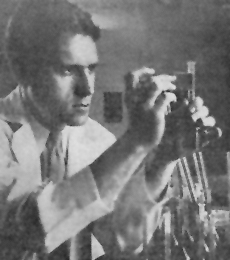Emanuel Kaplan, ScD

More than 50 years ago, Dr. Kaplan was key to focusing national attention on a dilemma that continues to plague our children - the silent epidemic of lead paint poisoning.
After receiving his degree at the School, he visited the DuPont Chemical Company to study the new dithizone technique for detecting blood lead. Developed in Germany and used in the United States by DuPont chemists, the test provided the first sensitive quantitative method for measuring lead in blood and other biological samples.
Under Dr. Kaplan's direction, in 1935 the Baltimore City Health Department pioneered a free diagnostic program that was an immediate success and provided data that forced public officers to recognize the seriousness of the epidemic.
Dr. Kaplan's work led to a pioneering lead paint poisoning prevention program in Baltimore. Eventually, guidelines for lead paint abatement were established in the United States.
